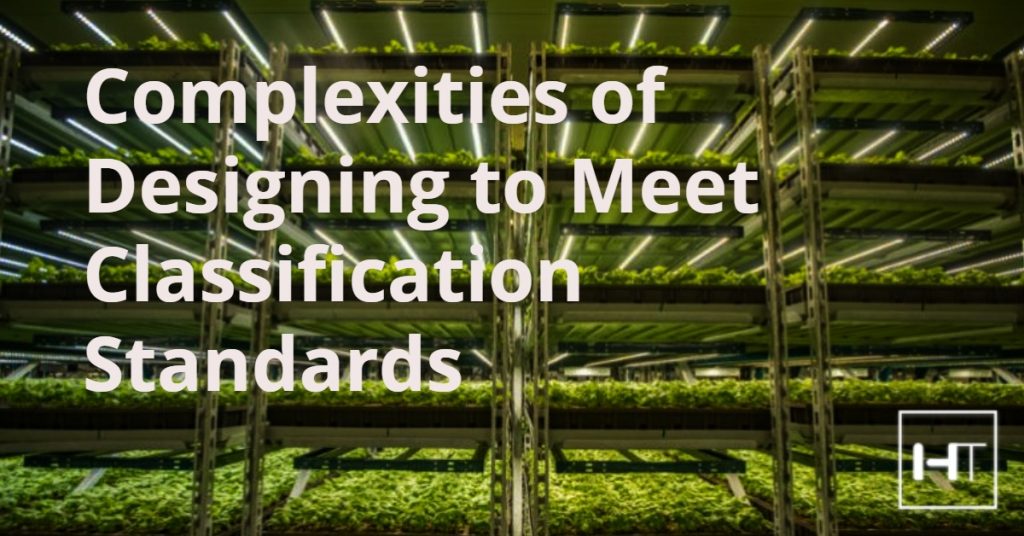
Designing a Cannabis Lab
July 6, 2020
Hybrid Tech Announces Lab Planning & Processing Division for Cannabis and Hemp
September 11, 2020Written by: Kevin Hicks, Process Building Systems Engineer
When it comes to extraction and using volatile, flammable solvents, several safety and usage codes come into play. The purpose of these codes is to protect the property, the equipment, and most importantly the lives of the people working daily with these solvents and the equipment associated with them.
You’ve likely heard of C1D1 and C1D12 ratings, but what’s the difference? C1D1 (Classification 1, Division 1) is a safety classification based on the NEC (National Electrical Code) Article 500 and referenced by the NFPA (National Fire Protection Association) Publication 70. Classification 1 is defined as flammable vapors, where Classification 2 is defined as flammable dust. Division 1 is defined as a location where vapors are present all the time, meaning they are present greater than or equal to 10% of the time, or a large portion of the time, defined as between 0.1-10% of the time. Division 2 is defined as a space that is unlikely to have flammable vapors.
Save time and money by aiming for C1D1
Defining the rarity of flammable vapors is a point of contention in many processes. The conversation revolving around if a container is open or closed, or how long it will be open is more important than one would think. In general, many fire marshals prefer the more conservative C1D1 rating. In my design experience designing with C1D1 as the initial criteria is the best approach. If an argument is made and accepted by the AHJ (Authority Having Jurisdiction) for a C1D2 rating, it is easier and more cost-efficient to reduce the equipment requirements to C1D2 than to increase the rating of the space to C1D1.
Classification is not to be confused or conflated with control areas; they are very different. Control areas are a system used by the NFPA to monitor storage quantities of hazardous materials to inform the fire department on call for the facility. On the other hand, classification describes the safety requirements needed for that space.
Cross-team Coordination is Key for Success
The general safety requirements for flammable gas classifications require coordination between multiple design consultants. Architects are needed to synchronize the fire rating of the walls and the FLS (Fire Life Safety) evacuation requirements. Mechanical engineers ensure the emergency exhaust systems and ducts are protected with the correct style of dampers, and that the motors and fans are of the correct type. Electrical engineers certify that all your equipment has the correct classification. They also make certain any shunt off systems and power systems are designed to handle a shutdown without damaging the equipment or interrupting the system’s ability to start up again. And structural engineers work with all the aforementioned professionals to ensure the equipment is secured per local structural code, and that the walls are properly located. It’s obvious to see that without proper coordination and communication across all parties involved with your project, it’s easy to forgo a key component required to achieve your C1D1 rating.
Select an Educated Manufacturer
Manufacturer representatives are also vital in this process. Having a manufacturer and representative that understands and can discuss code related safety issues, specifically electrical classification, and provides equipment that is tested and verified, typically through the UL (Underwriters Laboratory), is an understated advantage. As the hydrocarbon extraction equipment sector matures, manufactures are increasing their level of support, though it still lags the more established areas of design concerning safety.
While a detailed description of the multiple required safety codes would involve a more extensive write-up, the primary takeaway is that the safety codes span multiple governing bodies and consultants. As a result, safety classification standards must be considered carefully, and their implementation is given a proper portion of the budget. Extraction lab areas have stringent and valuable safety requirements and cannot be value-engineered effectively. Take the time, and value the code as a measure to ensure safety and as a foundation for creating high-quality facilities and processes.
If you have a project that requires C1D1 ratings or other classifications, reach out and find out what we can do for you!

